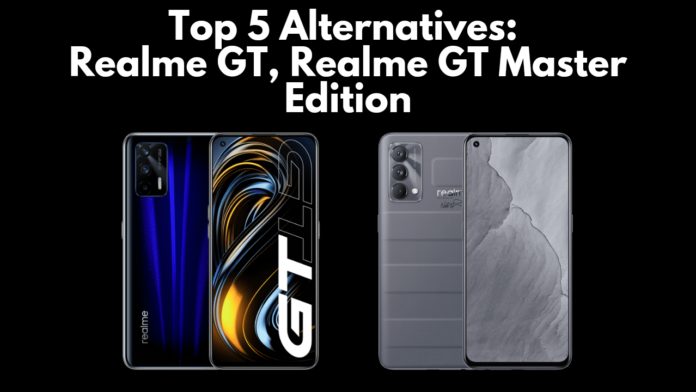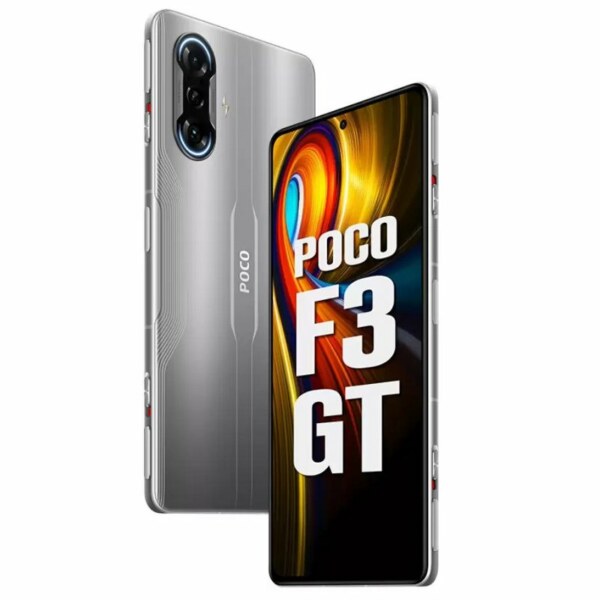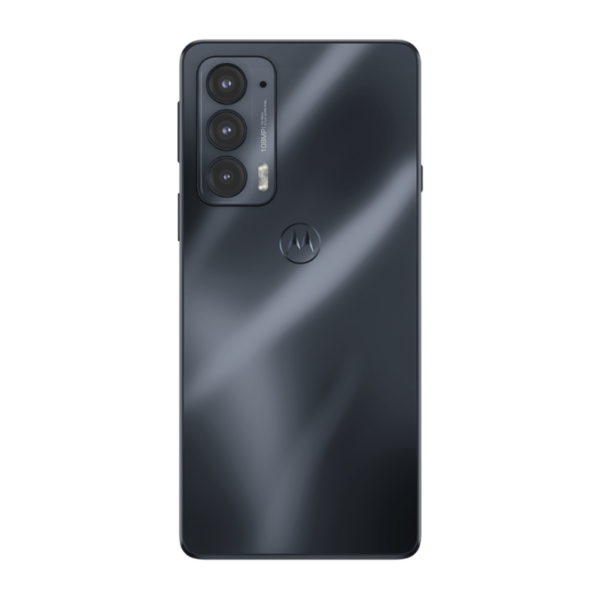Realme has launched the Realme GT and the Realme GT Master Edition smartphones in India. The Realme GT comes with Qualcomm’s Snapdragon 888 Chipset while the Master Edition is equipped with Snapdragon 778G. Both the smartphones seem to have high value for money characteristics, considering the GT starts at Rs 37,999 while the Master Edition starts at Rs 25,999. But here are a few more valuable alternatives to the Realme GT and the Realme GT Master Edition one can consider:
iQOO 7 Series
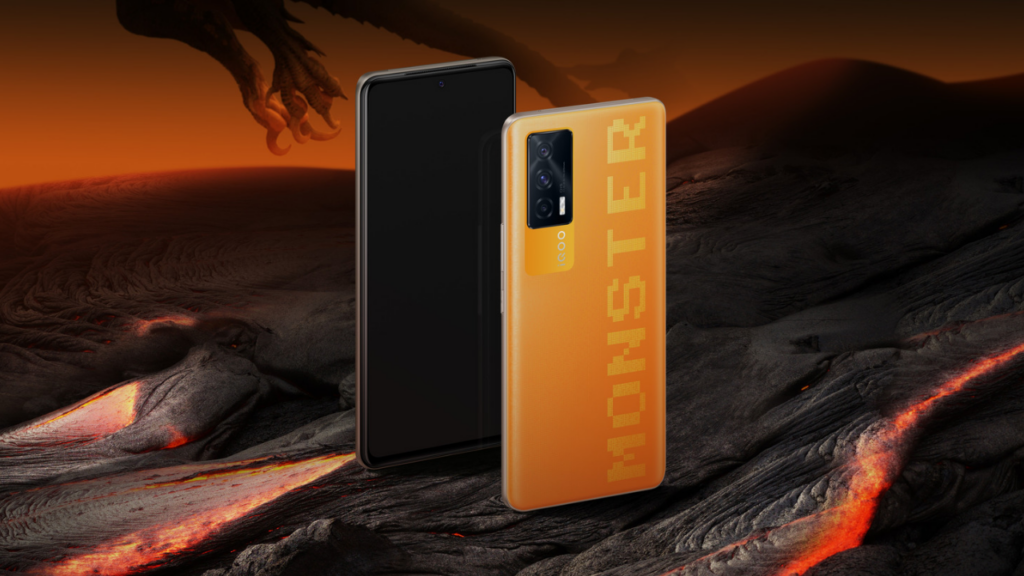
Both the phones under iQOO 7 series are worth a look if you have the budget for Realme’s phones. They serve as one of the best alternatives to the Realme GT as well as the GT Master Edition. The iQOO 7 is priced in India at Rs 31,990 for the 8GB/128GB variant, Rs 33,990 for the 8GB/256GB variant and Rs 35,990 for the 12GB/256GB variant. The iQOO 7 Legend comes in two variants including an 8GB/128GB model priced at Rs 39,990 while the 12GB/256GB model is priced at Rs 43,990.
The iQOO 7 series comes with a 6.62-inch punch-hole style FHD+ AMOLED Display that comes with a touch sampling rate of 300Hz, a variable Refresh Rate of up to 120Hz, 1300 nits peak brightness and is also HDR10+ certified. The display is also pressure sensitive in the left and right areas of the display on the iQOO 7 Legend when the device is in landscape position for more precise controls with supported titles.
The iQOO 7 is powered by the Snapdragon 870 whereas the iQOO 7 Legend on the other hand is powered by the Snapdragon 888 chip. Both are paired with 8GB/12GB of LPDDR5 RAM and 128GB/256GB of UFS3.1 storage. The company has done special performance tuning so the consumer can take the best advantage of the Processor while gaming with heavy graphics.
For the optics, the iQOO 7 has a triple camera setup on the back including a 48MP Sony IMX598 primary shooter with OIS, a 13 ultrawide sensor with a 120-degree field of view and a Mono camera. The iQOO 7 Legend replaces the Mono camera for a 13MP Portrait sensor while the other Sensors remain the sameThere is a 16MP shooter on the front for selfies and video calls.
The iQOO 7 Legend is backed by a 4000mAh battery that is split into two 2000mAh cells and supports 66W fast charging. The iQOO 7 on the other hand has a bigger 4400mAh cell with 66W Fast charging support. The devices also have dual stereo speakers with Hi-Res Audio and have a linear motor for haptics. The iQOO 7 runs on iQOO UI based on Android 11. Connectivity options include Wi-Fi 6, 4G LTE, Dual-SIM support, Bluetooth v5.2, NFC, and Type-C port.
IQOO keeps revealing offers when the price of the iQOO 7 comes down, which makes it a better buy over the Realme GT because of a better processor.
Pros
- 4D haptic feedback system
- Better processor for almost same price in iQOO 7 (during offer period when the price goes down)
- Slightly bigger display
Cons
- Slightly smaller battery
Motorola Edge 20 Series
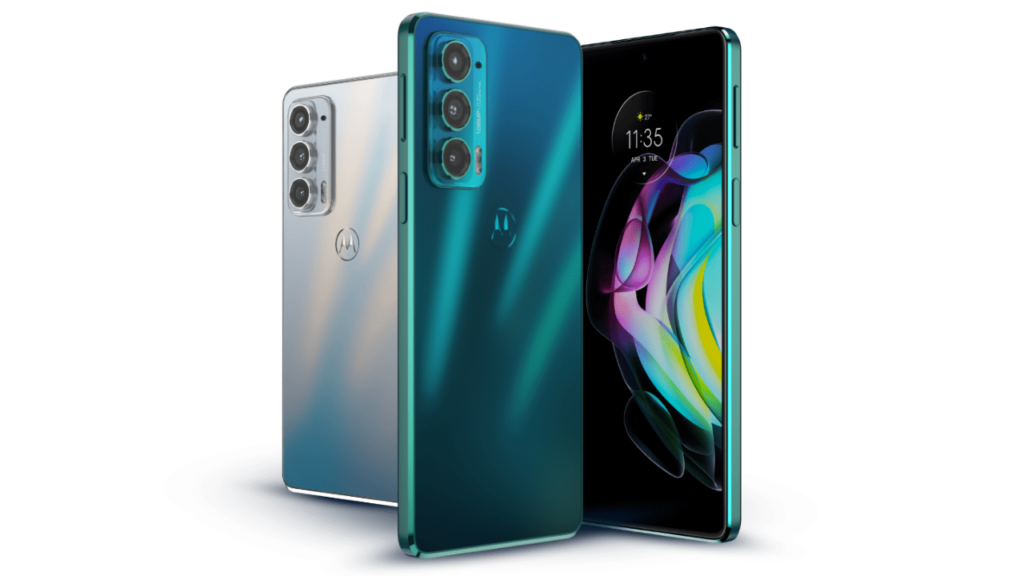
The Edge 20 series by Motorola is again one of the toughest alternatives for the Realme GT and the GT Master Edition. The Moto Edge 20 Fusion is priced at Rs 21,499 for the 6GB RAM with 128GB storage version. The 8GB RAM with 128GB storage version costs you Rs 22,999. It will go on sale starting August 27, 12 pm on Flipkart. The phone comes in Cyber Teal and Electric Graphite colours. The Edge 20 is priced at Rs 29,999 for the single 8GB RAM with 128GB storage version.
The Motorola Edge 20 Fusion sports a 6.67-inch 10-bit OLED display with a DCI-P3 colour gamut and HDR10+. The display has a refresh rate of 90Hz. The MediaTek Dimensity 800U SoC powers the phone, along with up to 8GB of RAM. The cameras on the back include a 108-megapixel primary sensor, 8-megapixel ultrawide angle shooter and 2-megapixel depth camera. On the front, there’s a 32-megapixel selfie camera.
It has a side-mounted fingerprint scanner, a water-repellent design and packs a 5000mAh battery. The battery can charge at up to 30W speeds. It also runs My UX based on Android 11. Connectivity options include 5G, 4G LTE, Wi-Fi 802.11ac, Bluetooth v5, GPS/ A-GPS, and a USB Type-C port.
The Motorola Edge 20, on the other hand, sports a 6.67-inch 10-bit OLED display. In addition, the display gets DCI-P3 colour gamut, HDR10+, and 144Hz refresh rate support. It is powered by the Snapdragon 778G processor with 8GB of RAM and 128GB of storage.
The phone comes with a triple rear camera setup. There’s a 108-megapixel primary sensor with an f/1.9 lens, an 8MP telephoto camera with an f/2.4 telephoto lens, and a 16-megapixel sensor with an f/2.2 ultra-wide lens. In addition, there’s a 32-megapixel selfie camera for video chats and selfies with an f/2.25 lens.
It packs a 4000mAh battery with support for 30W fast charging. The phone runs on Android 11 with My UX on top. The phone also has ThinkShield for Mobile protection to prevent phishing attacks. In addition, it has connectivity options like 5G, 4G LTE, Wi-Fi 6, Bluetooth v5.2, GPS/A-GPS, NFC, and a USB Type-C port.
Yes the Edge 20 gives you less storage for the same price as the top model of GT master Edition, but it does have a better camera based on on-paper specifications. Along with that, you get a higher refresh rate display as well. This enables it to make it to our list of alternatives for the Realme GT Master Edition and the Realme GT.
Pros
- Better Cameras as per on paper specs
- Better front facing camera as compared to Realme GT (as per on-paper specs)
- Higher refresh rate display
Cons
- Slower charging
- Smaller battery
- Single bottom mounted speaker
Mi 11X 5G
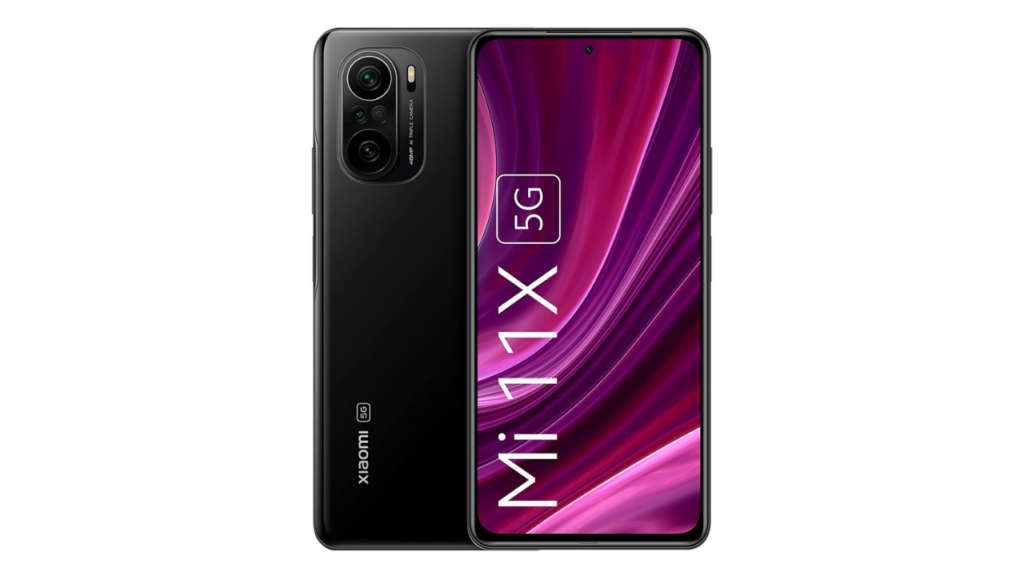
The Mi 11X 5G is available in two variants including 6GB + 128GB and 8GB + 128GB and is priced at Rs 29,999 and Rs 31,999 respectively. It has a 6.67-inch E4 AMOLED display FHD+ (2400 x 1080 pixels) display with a 120Hz refresh rate.
There’s 360Hz touch sampling rate, HDR10+ support, 1300 nits peak brightness, and Gorilla Glass 5 protection. There’s a 2.76mm punch-hole on the front that houses the front camera.
The Mi 11X is powered by the Qualcomm Snapdragon 870 paired with Adreno 650 GPU. It comes with up to 8GB of RAM and 128GB of storage. It comes with a triple camera setup including a 48MP IMX 582, f/1.79 primary camera along with an 8MP ultra-wide camera with f/2.2 aperture, 119° FoV and a 5MP tele macro camera. On the front, it has a 20MP selfie shooter.
The phone is backed by a 4,520mAh battery with 33W fast wired charging support. It sports dual stereo speakers with Dolby Audio and Hi-Res Audio certification. The smartphone runs on Android 11 based on MIUI 12 and also has an IP53 rating. Connectivity options include SA/NSA 5G, Wi-Fi 6, Bluetooth 5.1, NFC, GPS, GLONASS, QZSS, NavIC, Galileo.
The Mi 11X 5G gets you a better processor at the same price. Along with that, you get a bigger battery with slightly faster charging. It is one of the best alternatives to the Moto Edge 20 in our opinion and is worth looking at.
For a price of Rs 30,000, you are getting a better deal with this alternative of the Realme GT Master Edition. There’s a much better flagship level processor although you do lose out on some amount of storage and RAM.
Pros
- Better processor
- IP53 rating
- Faster LPDDR5 RAM than Master Edition
- Faster UFS 3.1 storage than Master Edition
Cons
- Inferior cameras (per on-paper specs)
- Heavily skinned user interface
- Slower charging rate
Poco F3 GT
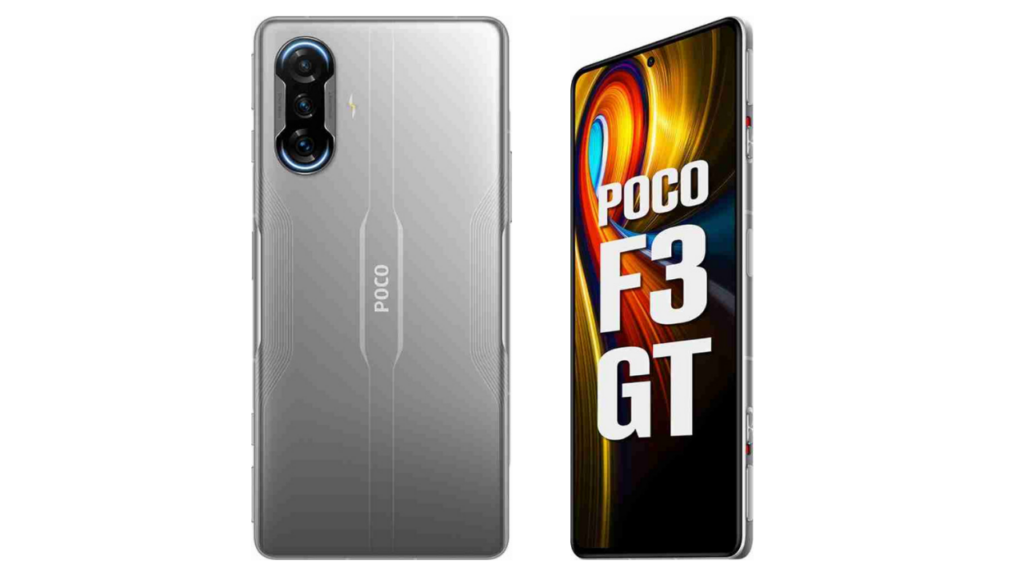
The Poco G3 GT 6GB + 128GB variant is priced at Rs 26,999. The 8GB + 128GB variant of the phone is priced at Rs 28,999. The 8GB + 256GB version is priced at Rs 30,999. The device features a 6.67-inch AMOLED display FHD+ (2400 x 1080 pixels) display. Further, the display comes with a 120Hz refresh rate, a 480Hz touch sampling rate, 500-nits peak brightness, and Gorilla Glass 5 protection. Additionally, there is HDR 10+, and DC Dimming.
Poco F3 GT packs the MediaTek Dimensity 1200 SoC with up to 8GB of LPDDR4x RAM and up to 256GB of UFS 3.1 storage. The storage is expandable via microSD card. For photos and videos, the phone comes with a triple rear camera setup. It has a 64-megapixel /1.65 Aperture primary camera, 8MP ultra-wide camera with f/2.2 aperture, 119° FoV and a 2MP macro camera. For selfies and video calls, the device uses a 16-megapixel shooter.
As for software, the handset runs Android 11 based on MIUI 12.5. There’s also a 5,065mAh battery with 67W fast wired charging support. It includes a side-mounted fingerprint scanner for security. The phone also has face recognition as well.
The phone supports SA/NSA 5G, Dual-Band WiFi, Bluetooth 5.2, GPS, A-GPS, BeiDou, GLONASS on the connectivity front. Additionally, the phone has a USB Type-C port, and a 3.5mm Headphone jack as well. It measures 163.8 x 75.6 x 8.4mm in dimensions and weighs 190g. Additional features include dual stereo speakers with Dolby Audio, IP53 dust resistance, Infrared sensor and more.
There are a lot of additional features available with the Poco F3 GT which again makes it one of the impressive alternatives to Realme GT and GT Master Edition. You get retractable gaming triggers built into the phone called Maglevs. Further, there are dual stereo speakers for a better audio experience along with a larger battery with slightly faster charging. Also, you do get an IP53 rating with this one and an identical camera setup for a similar price.
Pros
- Better processor than GT Master Edition
- Faster charging
- Bigger battery
- IP53 rating, retractable gaming triggers
- Faster Storage
Cons
- Heavily skinned UI
OnePlus Nord 2
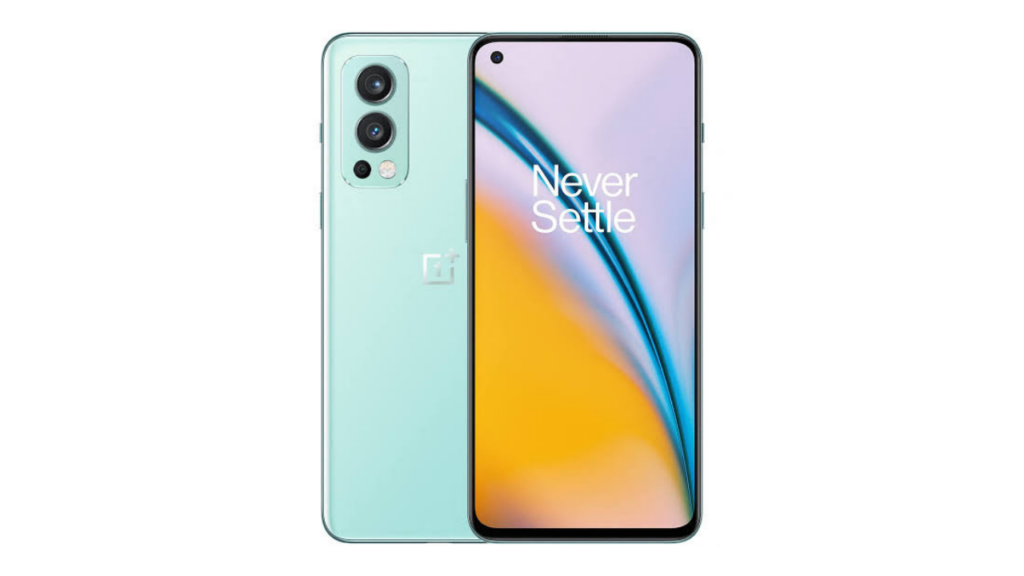
The OnePlus Nord 2 is priced at Rs 27,999 for the 6GB + 128GB storage variant, Rs 29,999 for the 8GB + 128GB model and Rs 34,999 for the 12GB + 256GB model. It sports a 6.43-inch FHD+ 90Hz AMOLED touchscreen. The display is HDR10+ certified with Gorilla Glass 5 protection. The MediaTek Dimensity 1200 AI chipset powers the smartphone. There’s up to 12GB of RAM and up to 256GB of UFS 3.1 storage.
The OnePlus Nord 2 has been launched with the new OxygenOS 11.3, whose codebase has been merged with ColorOS. The company has recently also confirmed it will get 2 years of major software upgrades with 3 years of security patches. In addition, OnePlus Nord 2 5G has an in-display fingerprint sensor.
Moving on, it is backed up by a 4,500 mAh dual-cell battery with 65W fast charging. Connectivity options include Wi-Fi 6, 5G, 4G LTE, GPS, and USB Type-C port for charging. Additional features on the OnePlus Nord 2 include Haptics 2.0, AI features all over the software, dual stereo speakers, and more.
For optics, you get a triple camera setup on the rear. The sensors include a 50-megapixel Sony IMX766 primary sensor with OIS, an 8-megapixel Wide-Angle sensor, and a 2-megapixel Mono cam. On the front, there’s a 32MP Sony IMX615 camera for selfies.
OnePlus has committed to providing a better experience with the OnePlus Nord 2 following its merger with Oppo in terms of software. The OnePlus Nord 2 gets you an identically rated battery cell. There’s also a better camera as per the specifications on paper.
Pros
- Better processor
- Better camera (per on-paper specs)
Cons
- 90Hz display


